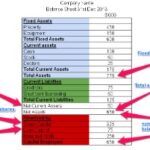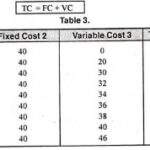For example, if depreciation or impairment is applied to a long-term or fixed asset to reflect wear and tear or obsolescence, accounting records will report a value less than the historical cost. Today the land should be reported on the company’s balance sheet at its historical cost of $100,000 even though its current cost, replacement cost, inflation-adjusted cost, appraised value, and assessed value amounts range from $150,000 to $270,000. The historical cost principle does not account for adjustments due to currency fluctuations; hence, the financial statements will still record the value of the asset at the cost of purchase.
What is the difference between historical cost and amortized cost?
Historical cost refers to the actual cost or the cost price at which the asset was initially bought. Amortised cost refers to the price of the asset after deducting amortisation from the historical cost of the asset.
While use of historical cost measurement is criticised for its lack of timely reporting of value changes, it remains in use in most accounting systems during periods of low and high inflation and deflation. During hyperinflation, International Financial Reporting Standards (IFRS) require financial capital maintenance in units of constant purchasing power in terms of the monthly CPI as set out in IAS 29, Financial Reporting in Hyperinflationary Economies. Various adjustments to historical cost are used, many of which require the use of management judgment and may be difficult to verify. The trend in most accounting standards is towards more timely reflection of the fair or market value of some assets and liabilities, although the historical cost principle remains in use. Many accounting standards require disclosure of current values for certain assets and liabilities in the footnotes to the financial statements instead of reporting them on the balance sheet. The IASB did not approve CMUCPP in 1989 as an inflation accounting model.
What are the benefits of using the Historical Cost Convention?
Historical cost is a fundamental basis in accounting, as it is often used in the reporting for fixed assets. It is also used to determine the basis of potential gains and losses on the disposal of fixed assets. Independent of asset depreciation from physical wear and tear over long periods of use, an impairment may occur https://kelleysbookkeeping.com/types-of-budgets-and-budgeting-models-in/ to certain assets, including intangibles such as goodwill. With asset impairment, an asset’s fair market value has dropped below what is originally listed on the balance sheet. An asset impairment charge is a typical restructuring cost as companies reevaluate the value of certain assets and make business changes.

Under the Historical Cost Convention, assets and liabilities are initially recorded in the accounting system at their original or historical cost and are not adjusted for the subsequent increase in value. A historical cost can be easily proven by accessing the source purchase or trade documents. However, historical cost has the disadvantage of not necessarily representing the actual fair value of an asset, which is likely to diverge from its purchase cost over time. For example, the historical cost of an office building was $10 million when it was purchased 20 years ago, but its current market value is three times that figure. The conservatism principle in accounting dictates that estimates, uncertainty, and financial record-keeping should be done in a manner that does not intentionally overstate the financial health of an organization. Historical cost is one way of adhering to the conservatism principle, as companies must report certain assets at cost and have a more difficult time exaggerating the value of the asset.
Historical cost and accounting standards
For example, when business owners fill out a balance sheet, they need to report the historical cost at the time of the transaction, and not the current or replacement costs. While some countries, such as the Netherlands and the United Kingdom, may allow historical cost figures to be modified in accordance with economic, inflationary or market changes, this practice is not allowed in the United States. The capital maintenance in units of constant purchasing power model is an International Accounting Standards Board approved alternative basic accounting model to the traditional historical cost accounting model. Some assets must be recorded on the balance sheet using fair value accounting or at their market price.
The historical cost is £13,000, what he originally purchased the machine for. He saves his receipt for future reference and records this on his accounting reports. Costs recorded in the Income Statement are based on the historical cost of items Historical Cost Definition sold or used, rather than their replacement costs. It is relatively easy to retrieve the original cost of an asset, provided records were kept. Trade, sales, or purchase documentation are used to determine the historical cost of an asset.
Historical Cost: Definition, Principle & Advantages
The historical cost of an asset is different from its inflation-adjusted cost or its replacement cost. The replacement cost is the current value one would pay to acquire a similar asset, and the inflation-adjusted cost is the upward or positive adjustment of the acquisition cost of an asset from the time of purchase, relative to changes in inflation. The cost principle might not reflect a current value of long-term property after so many years. For example, a building could be worth a different price now than it was 50 years ago.
- It is also used to determine the basis of potential gains and losses on the disposal of fixed assets.
- For some types of assets with readily available market values, standards require that the carrying value of an asset (or liability) be updated to the market price or some other estimate of value that approximates current value (fair value, also fair market value).
- The trend in most accounting standards is towards more timely reflection of the fair or market value of some assets and liabilities, although the historical cost principle remains in use.
- The market value could have changed between the initial purchase and when you sell the item.
All such information is provided solely for convenience purposes only and all users thereof should be guided accordingly. The IASB requires entities to implement IAS 29 which is a Capital Maintenance in Units of Constant Purchasing Power model during hyperinflation. Brianna has a masters of education in educational leadership, a DBA business management, and a BS in animal science. Harold Averkamp (CPA, MBA) has worked as a university accounting instructor, accountant, and consultant for more than 25 years.
IASB approved alternative to historical cost accounting
Her expertise is in personal finance and investing, and real estate. When you access this website or use any of our mobile applications we may automatically collect information such as standard details and identifiers for statistics or marketing purposes. You can consent to processing for these purposes configuring your preferences below.

GAAP requires that certain assets be accounted for using the historical cost method. Inventory is also usually recorded at historical cost, though inventory may be recorded at the lower of cost or market. Historical cost is the cash or cash equivalent value of an asset at the time of acquisition. Imagine if someone were to have purchased an acre of land 10 years ago for $10,000 and that land is now worth $20,000. The historical cost is $10,000, and the fair market value is $20,000. Historical cost is the price paid for an asset when it was purchased.
Historical Costs: A Real-Life Scenario
Historical cost is often calculated as the cash or cash equivalent cost at the time of purchase. This includes the purchase price and any additional expenses incurred to get the asset in place and prepared for use. Need an easy way to record your assets and other business transactions? Patriot’s online accounting software is easy to use and made for small business owners and their accountants. Let’s say you buy equipment for $1,000, and it has a useful life of five years. With the cost principle, you record the initial purchase amount in your accounting books for small business.
For example, the figures do not provide information about the current value is of an asset, which can be more readily determined through fair market value. Historical cost is a term used in accounting that represents the original cost of an asset you’ve acquired or purchased at the time of transfer or sale. In cost accounting, the term refers to an amount of money used to buy or run a business.
Variable real value non-monetary items, e.g. property, plant, equipment, listed and unlisted shares, inventory, etc. are valued in terms of IFRS and updated daily. The Historical Cost Convention is an accounting concept that states that assets and liabilities should be reported on a company’s balance sheet at their original cost, regardless of any changes in value. This method of valuation ensures consistency in financial reporting by allowing companies to compare current asset values with historical costs over time. In accounting, the historical cost of an asset refers to its purchase price or its original monetary value. Based on the historical cost principle, the transactions of a business tend to be recorded at their historical costs. The concept is in conjunction with the cost principle, which emphasizes that assets, equity investments, and liabilities should be recorded at their respective acquisition costs.
Auditor issues report on South Burlington TIF district – Vermont Biz
Auditor issues report on South Burlington TIF district.
Posted: Thu, 25 May 2023 21:03:08 GMT [source]
